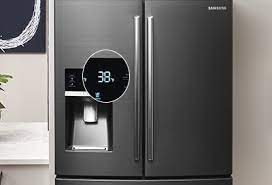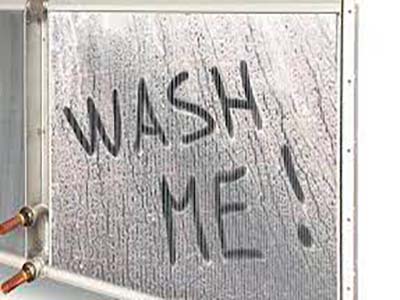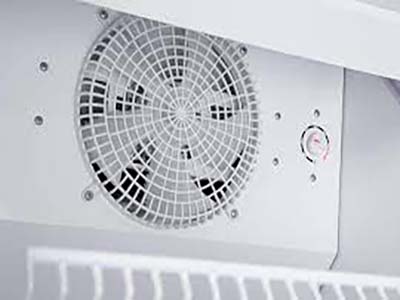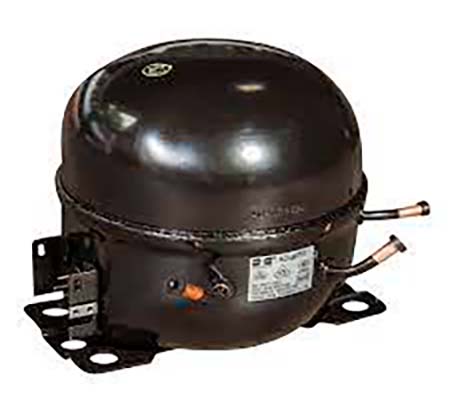In this article, we’ll embark on a journey to demystify the perplexing scenario of a fridge not cooling while its light continues to shine. We’ll explore the underlying causes behind this enigma and equip you with a range of troubleshooting techniques and solutions to restore your refrigerator to its optimal cooling state.
Signs of Trouble

Recognizing a Fridge Not Cooling with the Light On
Before diving into troubleshooting, it’s crucial to identify the signs of a malfunctioning refrigerator. These signs include:
- Food spoiling quickly.
- Ice melting or not forming in the freezer.
- Unusual noises coming from the fridge.
- A warm or room-temperature interior despite the light being on.
If you’ve noticed any of these signs, it’s time to take action.
Safety First
Precautions Before Troubleshooting:
Unplug the refrigerator from the electrical outlet. Provide adequate lighting near the refrigerator. Keep your distance from electrical components.:
- Unplug the refrigerator from the power source.
- Make sure the area around the fridge is well-lit.
- Avoid coming into contact with electrical components.
Troubleshooting Steps
Now, let’s get to the heart of the matter: diagnosing and resolving the issue.
1. Check Temperature Settings

Begin by examining the temperature settings on your fridge and freezer. Ensure they are set to the appropriate levels. Consult your refrigerator’s manual for guidance on the recommended settings.
Cause:
- Incorrect Settings: Sometimes, the issue can be as simple as incorrect temperature settings. If the fridge is set too warm, it won’t cool properly.
Solution:
- Adjust Settings: Refer to your refrigerator’s manual to find the recommended temperature settings. Typically, the fridge should be set between 35-38°F (1-3°C), and the freezer should be set at 0°F (-18°C). Adjust the settings accordingly and monitor the cooling performance.
2. Assess Fridge Location and Ventilation
Refrigerators need proper ventilation to function correctly. Ensure that there’s enough space around your fridge for airflow. Clear any obstructions from the vents at the back or underneath the fridge.
Cause:
- Poor Ventilation: If the fridge is placed too close to the wall or other objects, it may not receive adequate airflow, causing it to overheat and lose cooling efficiency.
Solution:
- Reposition the Fridge: Pull the fridge slightly away from the wall and ensure there’s at least a few inches of clearance on all sides for proper ventilation. Also, check that the vents at the back are unobstructed.
3. Inspect Condenser Coils

Dirty or dusty condenser coils can hinder cooling efficiency. Carefully clean these coils using a brush or vacuum cleaner, following the manufacturer’s instructions.
Cause:
- Accumulated Dust and Debris: Over time, dust and debris can accumulate on the condenser coils, reducing their ability to dissipate heat effectively.
Solution:
- Regular Cleaning: Perform routine cleaning of the condenser coils every six months or as recommended by the manufacturer. Use a brush or vacuum cleaner to remove dust and debris gently.
4. Examine the Evaporator Fan

The evaporator fan circulates cold air throughout the refrigerator and freezer compartments. If it’s not working properly, your refrigerator won’t cool properly. Check the fan for obstructions or signs of damage and replace if necessary.
Cause:
- Obstructed or Faulty Fan: The evaporator fan may become obstructed by food items or ice buildup, or it may malfunction over time.
Solution:
- Clear Obstructions: Check for and remove any objects blocking the evaporator fan in the freezer compartment. If the fan blades are damaged or the motor is defective, replace the fan
5. Evaluate the Thermostat
A faulty thermostat can lead to erratic temperature control. Test the thermostat with a multimeter to check if it’s functioning correctly. If it’s defective, replace it.
Cause:
- Thermostat Malfunction: The thermostat may fail over time, leading to inaccurate temperature readings and improper cooling.
Solution:
- Multimeter Test: Use a multimeter to measure the thermostat’s continuity. If it doesn’t provide a continuous electrical path when it should be cooling, replace the thermostat with a compatible replacement part.
6. Test the Compressor

The compressor is the heart of your refrigerator’s cooling system. Listen for unusual noises. If the compressor doesn’t run or makes strange noises, it may need to be repaired or replaced by a professional.
Cause:
- Compressor Issues: Compressor problems can result from wear and tear, electrical faults, or refrigerant leaks.
Solution:
- Professional Assessment: If you suspect compressor issues, it’s best to contact a professional technician. They can diagnose the problem and recommend repair or replacement as needed.
7. Verify Door Seals
Check door seals for cracks, tears, or debris that could prevent proper sealing. Replace damaged seals to maintain refrigerator cooling efficiency. Causes:
Causes:
- Damaged or Dirty Seals: Over time, door seals can wear out or become dirty, allowing warm air to enter the fridge.
Solutions:
- Clean or Replace Seals: Wipe the seals with a damp cloth to remove dirt and debris. If the seals are damaged, replace them with compatible replacements to ensure a proper seal.
8. Assess Refrigerant Levels
A low refrigerant level can also lead to inadequate cooling. If you suspect a refrigerant leak, it is best to contact a professional technician to repair the problem.
Causes:
- Refrigerant Leak: Leaks can occur due to damaged coils or other components within the refrigeration system.
Solutions:
- Professional Assistance: Refrigerant-related issues require specialized knowledge and equipment. Contact a professional technician to assess and repair any refrigerant leaks. Attempting to fix this issue without the necessary expertise can be hazardous.
By addressing these causes and implementing the corresponding solutions, you can improve your fridge’s cooling performance and keep your food fresh and safe.
Preventing Future Issues
Regular maintenance is key to preventing future cooling problems:
- Clean coils and vents periodically.
- Check and replace door seals when needed.
- Monitor temperature settings.
- Avoid overloading the fridge, which can hinder airflow.